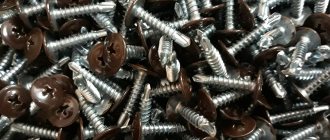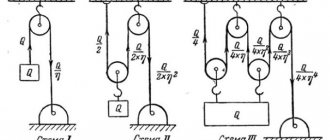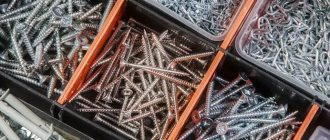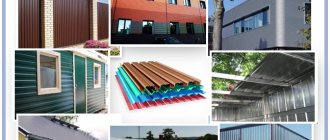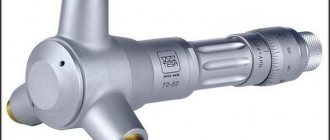Steel has a wide range of applications, from screws and nails to bridge parts. With the development of metallurgy, many alloys and grades of steel were invented.
Steel consists of 2.14% carbon, permanent impurities and other chemical elements. Although, as practice shows, its concentration usually does not exceed 1.5%. The share of iron in the material is at least 45%. Steel is produced by recycling white cast iron using various methods.
The main advantages of all types of steel:
- hardness and strength;
- wide functionality;
- variety of properties;
- viscosity and elasticity;
- easy machining;
- high wear resistance;
- prevalence of raw materials;
- economic benefit from use.
The main disadvantages are the lack of resistance to rust and the ability to store electricity.
Cast iron is the closest material in composition. However, in comparison with it, steel:
- harder and more durable;
- has a higher melting point;
- easier to machine;
- has higher thermal conductivity;
- easily subjected to the hardening procedure.
Classification by chemical composition
The chemical composition of steel is carbon and alloyed. The former consist of iron, permanent impurities and carbon. In turn, they are divided into:
- low-carbon (up to 0.2-0.3% carbon);
- medium carbon (0.2-0.45%);
- high-carbon (from 0.45%).
Alloy steel also contains metals and non-metals. They give the material higher mechanical and physicochemical properties. To alloy means to alloy. This type of steel is divided according to its chemical composition into:
- low-alloy (up to 2.5% additives);
- medium alloyed (2.5-10%);
- highly alloyed (from 10%).
Application of carbon steel
Due to their high strength, good machinability, durability and comparative cheapness, carbon steels have found their use in many sectors of the national economy.
They are especially popular in mechanical engineering, which is due to the ability of the metal to resist active loads, as well as high fatigue limits. Thus, carbon steel acts as the main material for the production of:
- flywheels;
- gears of reducers;
- connecting rod bodies;
- crankshafts;
- plunger pump pistons.
Carbon alloys are used to produce technological equipment for the light woodworking industry. In all these cases, structural carbon steels are used. After carburization, this type of metal is used to create wear-resistant parts, the operation of which will be accompanied by significant dynamic loads.
Based on low and medium carbon steel, the following products are produced:
- corners;
- channels;
- pipes;
- I-beams and other profiles
The initial properties of structural carbon steels must be increased by heat treatment (hardening).
The production of tools for various purposes is based on the use of tool steel alloys that contain 0.65–1.32% carbon:
- hammers, cores, screwdrivers, chisels, forging tools, scythes (grade of tool carbon steel U7 and U7A);
- scissors, chipper knives, hand carpentry tools, frame saws (grade U8, U8A);
- drills, small-diameter cutters, band saws, reamers (grade U10, U10A);
- turning wood cutters, hacksaw blades for metal, files, engraving tools (grade U12, U13).
Tool carbon steels are used for the production of measuring instruments. To obtain a small part with a linear dimensional accuracy of several hundred millimeters, the workpiece must not be heated or deformed as a result of the pressure exerted by the cutting tool.
The use of carbon steels of ordinary quality is in demand in construction; some grades are used in mechanical engineering and shipbuilding.
Classification by structure
The structure of steel is formed during its manufacturing process, during casting and processing under high temperatures. The chemical bonds of a material determine its relationship to any class. This ratio is taken into account for the use of steel in a particular area. Let's take a closer look at these classes:
- Austenite. This class is characterized by strength and uniformity. They are resistant to heat and rust, and can be used to work in hazardous environments or transport corrosive elements.
- Ferrite. Representatives of the class of ferrites are magnetic, making them optimal for use in radio engineering and electronics for the manufacture of antennas and other equipment.
- Martensite. This type of steel is obtained through alloying and heat treatment. The material can return to shape after mechanical processing. The use of martensite representatives is complicated by additional processing requirements.
- Perlite. Perlite is called decomposition upon cooling after heating. This condition is created artificially for plastic deformation.
- Cementite. Representatives of the species are physically elastic and hard.
In oxygen converters
Today, various steels are produced in oxygen converters. This technology involves purging liquid cast iron in a converter. To do this, pure oxygen is supplied. The features of this technology include the following points:
- A converter is a special equipment, which is represented by a pear-shaped steel vessel. The capacity of such a device is 100-350 tons. The inside of the structure is lined with refractory bricks.
- The design of the upper part includes a neck, which is necessary for loading the charge and liquid cast iron. In addition, gases formed during the melting of raw materials are removed through the neck.
- Pouring cast iron and adding other charge is carried out at a temperature of about 1400 degrees Celsius. In order to ensure active oxidation of iron, pure oxygen is supplied under a pressure of about 1.4 MPa.
- When a large amount of oxygen is supplied, cast iron and other mixtures oxidize, which causes the release of a large amount of heat. Due to strong heating, the entire charge material melts.
- At the moment when excess carbon is removed from the composition, the blowing stops and the lance is removed from the converter. Typically, purging continues for 20 minutes.
- At this stage, the resulting composition contains a large amount of oxygen. That is why, to improve performance, various deoxidizing agents and alloying elements are added to the composition. The resulting slag is removed into a special slag ladle.
- Converter melting time may vary, as a rule, it is 35-60 minutes. The holding time depends on the type of charge used and the volume of steel produced.
Oxygen converter method
It is worth considering that the productivity of such equipment is about 1.5 million tons with a capacity of 250 tons. This technology is used to produce carbon, low-carbon, and alloy steels. The oxygen-converter method of steel production was developed quite a long time ago, but today it is still very popular. This is due to the fact that when using this technology, high-quality metals can be obtained, and the productivity of the technology is very high.
In conclusion, we note that it is almost impossible to produce steel at home. This is due to the need to heat the charge to a sufficiently high temperature. At the same time, the process of iron oxidation is very complex, as is the removal of harmful impurities
Classification by degree of deoxidation
Deoxidation is a process that leads to a decrease in the oxygen content in the melt. This process is necessary in order to avoid the appearance of rust on rolled metal. The degree of deoxidation provides for the following classification:
- calm (SP) - have a homogeneous structure, contain a minimum amount of gases and non-metals; used for expensive alloys and the manufacture of metal structures;
- semi-quiet (PS) - their properties make it possible to produce load-bearing elements of welded and riveted structures; Bolts and nuts are made from PS, which can be used at low air humidity and high temperature;
- boiling steel (KP) – a brittle type of steel; suitable for the production of boiler parts and structures in contact with explosive substances; The main disadvantage is the rapid appearance of rust.
The following additives usually participate in the deoxidation reaction: aluminum, manganese, silicon.
Story
The documented history of rafting begins two millennia BC:
- Samples almost 4 thousand years old have been unearthed in Turkey.
- The material has become available to Europeans since Antiquity.
- The most famous artifacts of the Middle Ages were damask swords. Since that era, it has been the main material for edged weapons.
For centuries, the secret of making Damascus steel and Japanese samurai swords was kept secret.
- The heyday of steel production came in connection with the wars of the 19th century. The 20th century expanded the range with tank armor, aircraft hulls, and helmets.
In the third millennium, the alloy does not lose ground to the materials of the new generation.
Classification of steel by impurity content
The classification includes three types. The fewer harmful elements there are in the material, the higher quality it is considered. This parameter is determined by the production method and the identification of S and P content.
Ordinary quality
This type includes carbon steel. It is produced in a furnace or converter using oxygen. Ordinary quality steel is affordable, has a wide range of applications, is easy to process, but does not have wear resistance or strength.
Quality
It can be either carbon or alloyed. Compared to the previous type, this composition is produced in accordance with more stringent requirements. They are manufactured to strict melting specifications. High-quality steel is more expensive and is used for the manufacture of elements intended for high load levels.
High quality
This type of steel is produced using more modern methods, for example, smelting in electric furnaces. This method makes it possible to achieve a minimum content of gas inclusions and harmful non-metallic impurities, which ensures high mechanical properties of the material. High quality steel has a higher cost and is used to create particularly strong structures.
Particularly high quality
These are alloys with the minimum possible amount of impurities. They are of the highest quality available and are priced accordingly, close to jewelry. Particularly high-quality steel is an alloy steel that is used in unique cases. For example, for the production of spaceship parts.
What does the marking say?
We have listed the main reasons for classifying steels - purpose, structure, content of components. It is based on these factors that the brand is determined. So, for example, the most common subtype - structural alloys of ordinary quality without alloying additives - can be labeled as “St”. Then comes a number that determines the amount of carbon.
Classification of steel by purpose
It is quite conditional, since one group can contain many brands, while another can contain only a few. Some of them are applicable for adjacent values. To determine the classification of steel, products are subjected to various tests: acids, extreme loads, shock loads.
Structural
It belongs to the class of ordinary quality and is one of the most extensive groups. They are able to withstand various mechanical loads: shocks, bends, stretching. The construction material is resistant to fatigue, as well as the effects of negative environmental factors. Used for the production of structures and parts of increased strength.
Construction
These include carbon and low-alloy steel. Complex structures are made from it, in which the load is distributed equally to all areas. There are no special requirements for construction steel other than weldability.
For cold stamping
Cold stamping significantly changes the shape and dimensions of a metal workpiece. The following requirements are imposed on this type: a high level of ductility and tensile strength.
Cementable
The purpose of case-hardened steel is the production of parts and assemblies that are subject to periodic loads. Cementation is a procedure that increases the resistance of a material to wear.
Upgradeable
The purpose of the steel being improved is special types of heat treatment, for example, tempering or hardening. These procedures are used to improve strength and other characteristics.
High strength
To create a high-strength type of steel, a special composition and ratio of alloyed elements, as well as processing programs, are selected. During the procedure, high strength of the material is achieved, which is several times higher than the parameters of structural steel. High-strength elements are used in units of special strength.
Spring
Spring steel grades can withstand repeated elastic “fatigue” deformations inherent in metals. They are widely used in automobile production, the transport industry and other areas where there is a need for depreciation, returning elements to their original position after performing work functions. Carbon alloys can be alloyed with silicon, boron and other chemical elements.
Bearing
The purpose of bearing steel is the operation of equipment and mechanisms that use bearings. In this case, the material must have high strength, wear resistance and be durable. Foreign matter and uneven texture should be kept to a minimum. Bearing steel is subjected to special heat treatment and compaction.
Automatic
The main requirements for free-cut steel are high machinability, the formation of short chips and reduced friction between the part and the tool. This type is used for mass production of fasteners in automated production. The disadvantage of automatic steel is reduced ductility.
Wear-resistant
Wear-resistant steel is obtained by adding large amounts of manganese. Its purpose is to manufacture units that are constantly exposed to friction and heavy loads (both dynamic and statistical). For example, wear-resistant steel is used to make tracks, mining equipment, and rail equipment.
Corrosion resistant stainless steel
Low carbon steel is alloyed with chromium and manganese. Chromium crystallizes and forms a thin surface layer of oxides, which protects the part from exposure to chemical environments. Corrosion-resistant stainless steels can be used at temperatures up to 60 degrees in slightly aggressive (for example, steam or water) and very aggressive (alkalies and acids).
In turn, corrosion-resistant stainless steels are divided into:
- Corrosion resistant. They are designed to produce springs, valves and shafts that can withstand temperatures up to 600 degrees.
- Heat resistant. They can operate under limited loads and temperatures up to 1200 degrees Celsius.
- Heat resistant. Steel is alloyed with silicon, nickel or other elements. It can withstand severe loads and interact with high temperatures (up to 75% of the melting temperature).
- Cryogenic. They can interact with low temperatures (up to -200 degrees), while maintaining viscosity and elasticity. They can be used for the production of components for refrigeration units (scientific or industrial).
Basic properties of steel
When ordering a material, you need to consider what properties the steel must have in order to be suitable for a specific application. If you do not understand this feature, there is a risk of purchasing raw materials that do not meet the strength, level of corrosion protection, weldability quality and other characteristics.
Let's consider the main characteristics of the material.
Mechanical
Shows which processing options can be selected and where to use them. There are several main parameters:
- Strength. Shows how much load can be applied to a part until the first signs of failure appear. For each grade of material, this parameter is indicated, as well as the yield strength.
- Tensile strength. Indicates that the material is protected from mechanical stress.
- Yield limit. Gives an idea of the stretchability of the material. This helps to understand how far the material can be stretched until the process continues even when the load is no longer applied.
- Plastic. So that the material can be used in the manufacture of various types of parts and workpieces. This characteristic helps the raw material change shape; it is prescribed to determine the parameters of the relative bending angle and elongation.
- Impact strength. Directly related to the limits of dynamic loads. The characteristic indicates how much impact a finished product or workpiece can withstand before it begins to completely collapse.
- Hardness. Shows the maximum load over the area before indentation occurs. It can be determined by different methods, both Brinell and Vickers.
Physical
The parameters make it clear whether it is possible to use steel in construction or various fields of industry. There are three significant central indicators:
- Density. The specification encodes what mass of steel is contained in the specified volume. The higher the strength, the greater the protection from deformation, strong pressure and other potential threats.
- Thermal conductivity. The parameter gives an idea of how quickly heat is transferred through the workpiece. The parameter is very important for industry, for example, in the manufacture of radiators or pipes for heating mains.
- Electrical conductivity. Allows you to assess the safety of using the material in places where there is a risk of electric shock. The alloy can also be selected for installation in areas where its conductive characteristics are important.
Chemical
The entire set of parameters gives an idea of how the material will behave in different temperatures or environments with varying degrees of aggressiveness. There are four main parameters:
- Oxidability. The oxidation process is caused by contact of the metal with oxygen and can be stimulated by an increase in temperature. The level of oxidation is affected by the carbon content and the environment in which the products are used. The greater the exposure to oxidation, the faster rust will appear on the surface.
- Corrosion protection. Specified for different environments. May change when used outdoors or when in contact with water or soil.
- Heat resistance. Helps to understand at what heating corrosion begins to gradually develop on the metal. The characteristic is directly related to oxidability.
- Heat resistance. It differs from heat resistance in that it does not affect corrosion resistance and scale protection, but the strength itself. Knowing the parameters will help you understand to what temperature the workpiece will heat up before it can be broken or deformed.
Technological
Shows the possibility of processing using various technologies. Central parameters:
- Ductility. The higher it is, the faster it will be possible to shape it under constant external mechanical influence.
- Fluidity. If this parameter is at a high level, the molten material will be able to better fill voids.
- Weldability. Helps to connect various workpieces together. It varies depending on the type of welding used and the alloy itself.
- Machinability. Steel can be processed with different types of cutting tools to create rolled metal products and parts with different parameters and areas of application.
Tool steels
Tool steels are products without alloying that are durable. Additives are used to seal some areas. They are subject to special requirements related to their specific use.
Tool steels are also divided into several subtypes:
- for cutting tools;
- for measuring instruments;
- stamped;
- roller
For cutting tools
Steels for cutting tools are quite expensive, so not everyone can create products from them. Typically, some parts of the tools are made from constitutional steel, such as plates or blades.
Steel of this type, in turn, is divided into the following subtypes:
- carbon tool alloys (usually contain 0.5-1.3% carbon, common for use in the manufacturing process);
- alloyed tool tools (from which you can make cutters, drills and broaches);
- high-speed (can create products with heat resistance up to -660 degrees).
Steels for measuring instruments
Steel for measuring instruments must have stable shape and dimensions during alteration and storage. Also, its surface must be perfectly smooth, well processed and polished.
Such steel can be carbon and alloyed with chromium, nickel and other elements. To increase wear resistance and improve surface quality, products are cemented and hardened. Steel is still in demand in the manufacture of the most modern measuring instruments.
Die steels
Die steel is characterized by hardness, resistance to temperature changes and hardenability. It must be wear-resistant and have a permanent shape. These alloys include the following:
- cold stamping (in addition to hardness, wear resistance, stability of dimensions and shape, a high level of viscosity and resistance to temperature changes are added; they can work under conditions of impact and high pressure; they are produced on the basis of alloys with chromium and other elements);
- hot stamping (they must have increased strength and toughness when heated to 500 degrees and high thermal conductivity in order to avoid overheating; they are subject to an alloying procedure with chromium, nickel, vanadium, etc.).
Roll steels
Rolling steel is used to produce rolling mills, dies, punches, and blades for working with metal products. They can also be used to produce components for mining and paper-making equipment.
Basic requirements for roll steel:
- high level of hardenability for product strength (hardening of steel is carried out slowly, immersing it in oil for cooling);
- high wear resistance (it allows the entire rolling mill to operate for a long time and without interruption, ensuring stable parameters);
- contact strength (it must be greater than the voltage that occurs during the process, taking into account the load from the resistance and the mass of the device).
Designation of steels with alloying elements
Further it is more difficult, since the alloying composition comes into play. Below we show a table - a letter combination:
| Letter in marking | Chemical element sign | Name |
| X | Cr | Chromium |
| WITH | Si | Silicon |
| T | Ti | Titanium |
| D | Cu | Copper |
| IN | Wo | Tungsten |
| G | Mn | Manganese |
| F | W | Vanadium |
| H | Ni | Nickel |
| K | Co | Cobalt |
| M | Mo | Molybdenum |
Let's show it using a certain brand as an example: The first digit always indicates the number of hundredths of carbon. Then the letter designations that are responsible for the additives are listed. If there is no letter next to it, then this component is less than 1%. At the back, the very last letter (not shown in the example) can be “A” or “W” - this is high-quality or especially high-quality steel, respectively.
Advantages and disadvantages
The characteristics of the alloy depend on the composition and manufacturing method. There are also universal properties.
Advantages of steel:
- Strength, hardness.
- Viscosity, elasticity.
- Possibility of mechanical processing. Steel fragments are easy to bend, weld, and cut.
- Wear resistance, durability.
- Prevalence of raw materials.
- Simplicity, cost-effective production.
- Selecting a material with the desired properties. They are provided by a variety of composition and processing methods.
Plus the price availability of products.
Disadvantages of the material:
- Massiveness.
- Vulnerability to corrosion.
- Tendency to accumulate electrical potential.
These flaws are not critical; there are ways to neutralize them.


